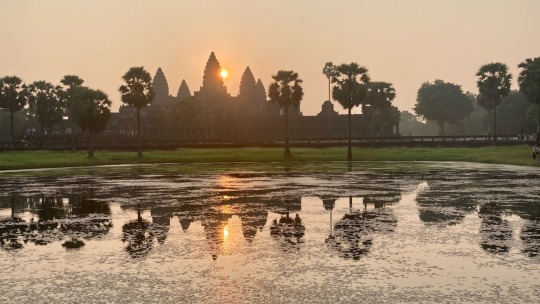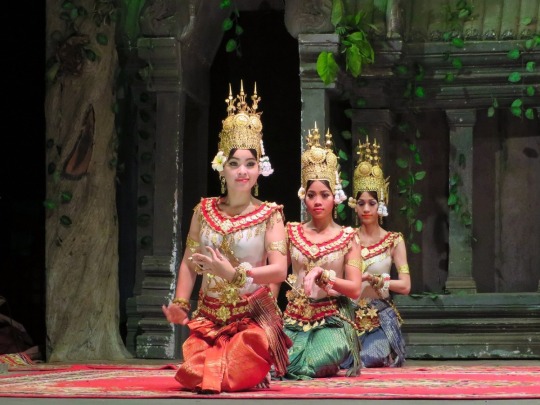#Cambodian Cuisine
Explore tagged Tumblr posts
Text

Cambodian Fried Pounded Rice With Bananas (Vegan)
#vegan#sweets#cambodian cuisine#southeast asian cuisine#mid autumn festival#banana#rice#ambok#coconut#coconut milk#coconut sugar#sea salt
19 notes
·
View notes
Text
គេងស្តាប់ស្នូរសម្លេងទឹកភ្លៀង Rain,Weather
youtube
#street food#cambodian cuisine#local food#cambodian food#cooking show#cambodian street food video#food vlog#food eating#thailand food#reviews food#making food#Adventure and activity#ទឹកធ្លាក់គីឡូ15 ខេត្តព្រះសីហនុ#ខេត្តព្រះសីហនុ#adventure holidays#luxury adventure holidays#travel#adventure#adventure travel#adventure travel vlog#adventure travel destinations 2023#adventure holiday#សម្លេងទឹកភ្លៀង#rain#weather#viator tours#justfly#rain and thunder sounds#Youtube
3 notes
·
View notes
Video
youtube
Unmissable Street Eats: Bacon Bread, Flaming Beef, & Juicy Roasted Duck!
#youtube#roasted duck#bacon sandwich#bread with bacon#asian street food#grilled ducks#khmer street food#cambodian cuisine
0 notes
Video
youtube
Nom Banhchok Across Cambodia: Kampot, Phnom Penh & Siem Reap Delights!
#youtube#rice noodle#nom banchok#chicken curry noodle#fish curry noodle#namya soup noodle#fish soup noodle#cambodian cuisine#bt food story
0 notes
Text
Cambodian Food: 4 Khmer Classics to Savor
Cambodian cuisine, widely recognized as Khmer cuisine, is a reflection of the country’s rich history, geography, and cultural tapestry. With its unique combination of fresh ingredients and bold flavors, Cambodian food provides an unforgettable culinary experience. Below, we highlight four iconic Khmer dishes that you simply must try when exploring this enchanting Southeast Asian nation.
1. Amok Trey (Fish Amok)
Amok Trey, or Fish Amok, is Cambodia’s quintessential dish and a must-try for any visitor. This creamy and aromatic dish features fish cooked in a coconut milk-based curry infused with lemongrass, turmeric, kaffir lime leaves, and other fragrant herbs. The fish is often steamed in banana leaves, giving it a subtle, earthy aroma that enhances its overall flavor. Traditionally served with rice, Amok Trey strikes a perfect balance of sweet, savory, and tangy notes that encapsulate Cambodian culinary artistry.
Particularly popular during the Water Festival, Bon Om Touk, Amok Trey symbolizes the life-giving role of the Mekong and Tonle Sap rivers in Cambodian culture and cuisine. These waterways not only supply an abundance of fish but also enrich the land for farming.

Amok Trey is a versatile favorite, often adapted with proteins like chicken, prawns, or tofu. Found in both Cambodian homes and restaurants, it remains a standout dish that embodies the heart of Khmer cooking.
2. Bai Sach Chrouk (Grilled Pork with Rice)
A cornerstone of Cambodian breakfasts, Bai Sach Chrouk is a simple yet flavorful dish enjoyed at any time of day. It consists of thin slices of pork marinated in garlic, soy sauce, and coconut milk, then grilled over charcoal. This method gives the meat a tender texture and smoky, slightly sweet flavor that distinguishes it from other preparations.
The dish is served atop a bed of fluffy broken rice and typically accompanied by pickled vegetables and a bowl of light chicken broth. The tangy crunch of the pickles pairs beautifully with the savory pork, while the broth adds a comforting warmth.

Bai Sach Chrouk captures the essence of Cambodian home cooking with its focus on high-quality, locally sourced ingredients and straightforward preparation. It’s a dish that reflects everyday life in Cambodia, offering a taste of the country’s unpretentious culinary charm.
3. Kuy Teav (Cambodian Noodle Soup)
Kuy Teav is a beloved noodle soup that’s deeply rooted in Cambodian culinary traditions, originating from Chinese Cambodian influences. This dish features rice noodles in a clear, savory broth made by simmering pork or beef bones. It’s then topped with slices of pork, beef, or seafood, and garnished with bean sprouts, fresh herbs, and lime.
The broth is the soul of Kuy Teav, developed through hours of slow cooking to achieve a rich, aromatic flavor. Diners can customize the dish with chili paste, fish sauce, or soy sauce, tailoring it to their taste preferences.

Kuy Teav can be served in two styles: as a soup with all ingredients combined (wet) or with the soup on the side (dry). The latter presentation resembles a noodle salad, offering a different yet equally delicious way to enjoy this Cambodian favorite.
4. Lok Lak (Stir-Fried Beef)
Lok Lak is a popular Cambodian dish showcasing marinated and stir-fried beef slices, typically served with rice or French fries. The beef is marinated in a mixture of soy sauce, oyster sauce, and Kampot black pepper, giving it a savory depth of flavor.
The dish is often accompanied by fresh vegetables like lettuce, tomatoes, and cucumbers, along with a zesty dipping sauce made from lime juice, salt, and pepper. The tangy sauce provides a refreshing contrast to the richness of the beef.

Lok Lak reflects the region’s shared culinary heritage, with influences from Vietnam, where a similar dish is known as “Bò lúc lắc” (shaking beef). This cross-cultural connection highlights the intertwined traditions of Southeast Asian cuisines, making Lok Lak a flavorful example of the area’s culinary diversity.
Conclusion
Cambodian cuisine offers a fascinating blend of flavors, history, and traditions that reflect the soul of the nation. From the creamy and aromatic Amok Trey to the hearty and comforting Bai Sach Chrouk, each dish tells a unique story of Cambodia’s cultural richness.
Instead of simply reading about these culinary delights, why not immerse yourself in their authentic flavors? Join Travel Sense Asia on an unforgettable journey to Cambodia, where you can savor the true essence of Khmer cuisine.
0 notes
Video
youtube
Serving Smiles with Nom Banchok Chicken Curry & Yellow Fish Soup
0 notes
Text
Unveiling the Hidden Gems of Cambodia: A Comprehensive Travel Guide
Cambodia, rich in history and natural beauty, offers Angkor Wat, serene islands, and vibrant cities. It's a must-visit destination for all.
Cambodia, a country steeped in history and brimming with natural beauty, offers an enchanting journey for the discerning traveler. Beyond the iconic Angkor Wat, this Southeast Asian gem reveals a tapestry of lesser-known temples, floating villages, and serene islands that beckon exploration. Best Time to Visit The ideal time to visit Cambodia is during the dry season from November to April1.…

View On WordPress
#Accommodation in Cambodia#Angkor Wat#Best Time to Visit Cambodia#Cambodia#Cambodian Cuisine#panvel#Phnom Penh#Siem Reap#Sihanoukville#thepanvelite#Transportation in Cambodia#Travel Guide
0 notes
Text
Explore the Wonders of Cambodia
#ExploretheWondersofCambodia Package Highlights: #AngkorWat Tour : Visit the awe-inspiring temples of Angkor Wat, a #UNESCOWorldHeritageSite. Cultural Immersion : Immerse yourself in Cambodia’s rich culture and traditions. Explore #Nature : Discover the stunning landscapes and natural beauty of #Cambodia #LocalCuisine : Indulge in delicious #Cambodiancuisine and culinary…

View On WordPress
#Adler Tours#Adler Tours & Safaris#Adler Tours and Safaris#Angkor Wat#Asia#Cambodia#Cambodia Package#Cambodian Cuisine#CAR HIRE#CAR ON RENT#Explore the Wonders of Cambodia#family Holidays#Gujarat#Heritage Site#India#Local Cuisine#nature#Rajkot#Temples#Travel#travel agent#UNESCO World Heritage Site
0 notes
Text
Seven Sultry Days In Siem Reap

View On WordPress
#Angkor Tom#Angkor Wat#Bats#Cambodia#Cambodian food#Flying foxes#independent travel#Khmer cuisine#Phare Circus#Preah Khan#Siem Reap#sunrise
8 notes
·
View notes
Video
youtube
3 Must-Try Spots for Nom Banh Chok in Phnom Penh – Chicken Curry & Khmer...
#youtube#traditional cambodian dish#khmer cuisine#chicken curry noodle#yellow fish soup noodle#nom ben jok
0 notes
Text

Thai & Cambodian-Inspired Vegan Baby Corn & Baby Carrot Curry
#vegan#lunch#dinner#curries#thai cuisine#cambodian cuisine#southeast asian cuisine#baby corn#carrots#garlic#shallots#kaffir lime leaves#coconut milk#chili#lemongrass#galangal#curry#turmeric#lime#vegan fish sauce#basil#cilantro#eat the rainbow
27 notes
·
View notes
Video
youtube
Nom Banhchok Across Cambodia: Kampot, Phnom Penh & Siem Reap Delights!
#youtube#rice noodle#chicken curry noodle#fish soup noodle#cambodian traditional cuisine#khmer dish#fish curry noodle
0 notes
Text
Discover Cambodia: A Comprehensive Travel Guide
Cambodia, a gem in Southeast Asia, is a land of ancient temples, vibrant culture, and resilient spirit. From the awe-inspiring Angkor Wat to bustling markets in Phnom Penh, Cambodia offers a rich tapestry of experiences for every traveler. Brief History Cambodia’s history dates back to the early kingdoms of Funan and Chenla, which later gave rise to the Khmer Empire in the 9th century. The…

View On WordPress
#15th century#19th century#9th century#access to quality education remains uneven#Activities for tourists in cambodia#adventure#africa#and animists.#and daily life of Cambodians. There are also small communities of Muslims#and larger stores#and urban planning of cities like Phnom Penh and Battambang. The colonial period brought modernization but also economic exploitation and cu#Angkor Wat#bag snatching in cambodia#Battambang#Beaches and Islands#Budget hostels in cambodia#but the US Dollar is widely accepted. ATMs are plentiful in urban areas#Cambodia#Cambodia Visa requirements#Cambodia was part of French Indochina from 1863 until 1953. The French influence is still visible in the architecture#Cambodian Riel (KHR#Can I use US dollars in Cambodia?#Cheap accomodation in Cambodia#Christians#Cost of living in Cambodia#credit cards#crowded places in Cambodia#cuisine#Cultural Performances#destinations
0 notes
Video
youtube
5 Best Street Foods in Kampot - A Unique Cambodian Food Journey
#youtube#grilled pork rice#crispy pancakes#yellow pancakes#grilled pork skewer#grilled pork noodle#shrimp rolls#coconut rolls#kampot foodie#street food in kampot#cambodian cuisine
0 notes
Video
youtube
Nom Ben Jok: The Khmer Rice Noodle Dishes
0 notes
Photo

Cambodian Tapioca-Banana Pudding Recipe I learned how to make this Cambodian dish from a friend who is Cambodian-American. Even my breakfast will consist of it! It tastes great warm, can be adorned with additional fruit, and is also a cooling cold dessert. 1/2 cup white sugar, 1/2 cup small pearl tapioca, 3/4 cup coconut milk, 5 medium ripe bananas sliced, 7 cups water divided, 1/4 teaspoon salt
0 notes